Customer Service Training Course in Poland
Our corporate training course is also available in Warsaw, Kraków, Łódź, Wrocław, Poznań, Gdańsk, Szczecin, Bydgoszcz, Lublin, Białystok, Katowice, Gdynia, Częstochowa, Radom, Sosnowiec, Toruń, Kielce, Rzeszów, Gliwice, Zabrze, Olsztyn, Bielsko-Biała, Bytom, Zielona Góra, Rybnik, Ruda Śląska, Tychy, Opole, Gorzów Wielkopolski, Dąbrowa Górnicza, Zakopane, and Sopot.
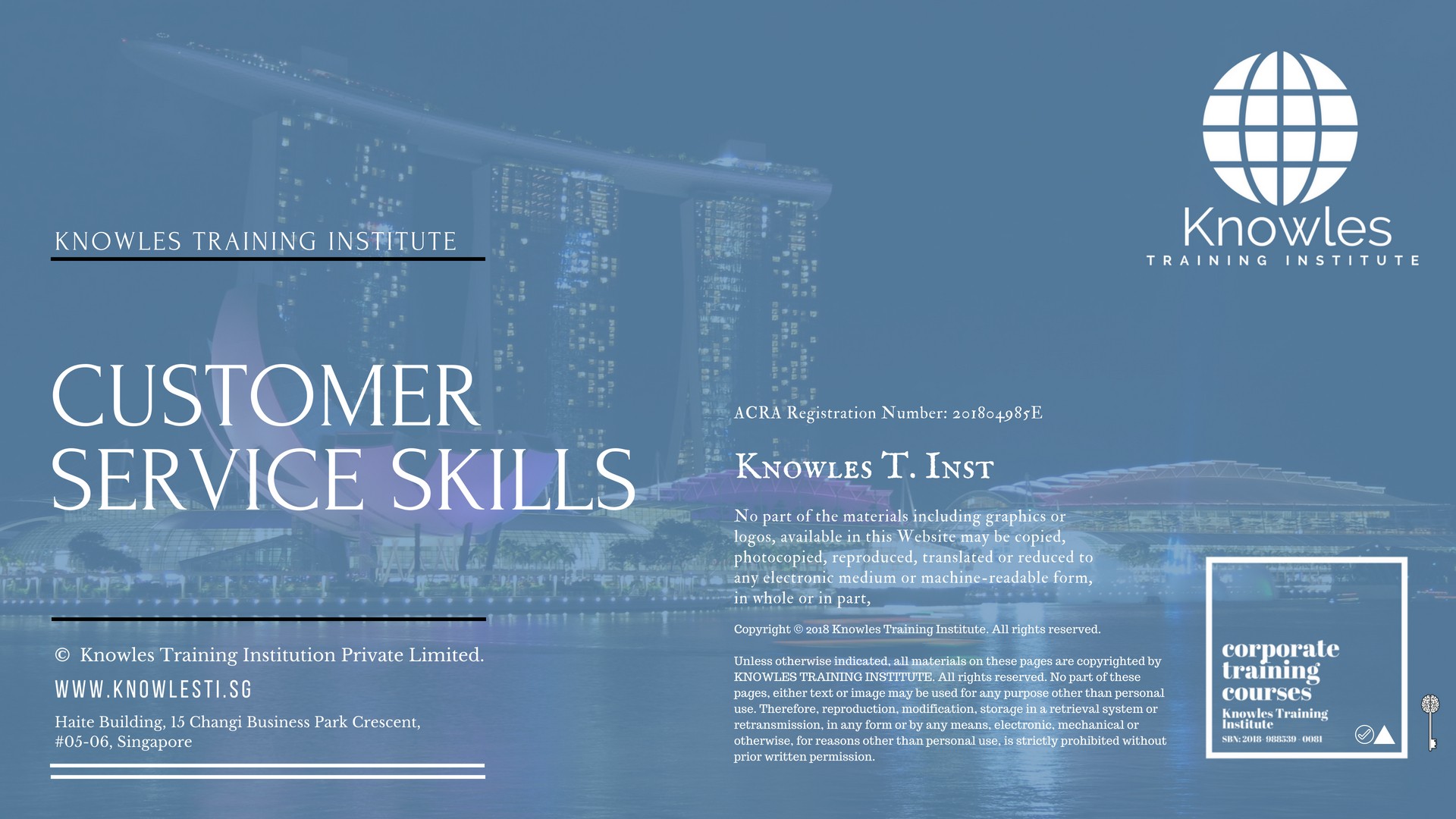
About This Customer Service Training Course in Poland
Customer Service Course in Poland
The customer service market requires their employees to have a list of soft skills. Whether you interact with your customers on the phone, in person, or via online chat or email, it is extremely important to relate with them on a human level. Customers must feel like they are interacting with a customer service representative who genuinely cares for them and wants to solve their problems.
Who Should Attend This Customer Service Skills Course in Poland Workshop
This Customer Service Skills Course in Poland workshop is ideal for anyone who would like to gain a strong grasp and improve their Customer Service Skills.
All Staff Within An Organisation
Managers
Team Leaders
Executives
Assistants
Officers
Secretaries
Group Size For This Customer Service Skills Training Program in Poland
The ideal group size for this Customer Service Skills course in Poland is:
Minimum: 5 Participants
Maximum: 15 Participants
Course Duration For This Customer Service Skills Course in Poland
The duration of this Customer Service Skills Course in Poland workshop is 2 full days. Knowles Training Institute Poland will also be able to contextualised this workshop according to different durations; 3 full days, 1 day, half day, 90 minutes and 60 minutes.
2 Full Days
9 a.m to 5 p.m
Customer Service Skills Course in Poland Benefits
Below is the list of course benefits of our Customer Service Skills course in Poland
- Improved customer service skills
- Higher customer service representative motivation
- Higher customer service representative engagement
- Higher customer service representative self-confidence
- Increase in customer satisfaction
- Enhance the company’s brand image
- Increase the company’s profits
Customer Service Skills Course in Poland Objectives
Below is the course objectives for Customer Service Skills course in Poland
Each and every one of us serves customers, whether we realize it or not. Maybe you’re on the frontlines of a company, serving the people who buy your products. Perhaps you’re an accountant, serving the employees by producing their pay checks and keeping the company running. Or maybe you’re a company owner, serving your staff and your customers.
This customer service course will look at all types of customers and how we can serve them better and improve ourselves in the process.
Customer Service Course in Poland Objectives:
Customer Service Course in Poland – Part 1
- State what customer service means in relation to all your customers, both internal and external
- Recognize how your attitude affects customer service
Customer Service Course in Poland – Part 2
- Identify your customers’ needs
- Use outstanding customer service to generate return business
Customer Service Course in Poland – Part 3
- Build good will through in-person customer service
- Provide outstanding customer service over the phone
Customer Service Course in Poland – Part 4
- Connect with customers through online tools
- Deal with difficult customers
Course Content For This Customer Service Training Course in Poland
Below is the course content Customer Service Course in Poland
Customer Service Course in Poland – Part 1: Who We Are and What We Do
Before we get started, we need to think about what is a customer? What customer service is all about? We also need to think about whom in our organization provides customer service. The simple answer to that question is: everyone.
- Who Are Customers?
- A customer is, in this day and age, anyone who uses a service. Although this has its logical extremes – you will find few people who are overjoyed by the idea of being a customer to a doctor, or their children a customer of their school. Therefore everyone who relies on you to do a job that will have an effect on their life, their job, or their use of a product is technically one of your customers. Above and beyond that there are different echelons of customers – internal and external, corporate and personal, regular and occasional. These are always people that you will be well-advised to keep happy, so customer service is an important – indispensable, one might say – element of any job in which you have customers.
- What Is Customer Service?
- Customer service is one of the true business essentials. Everyone remembers the bad customer service they have had, and most will also remember instances of good customer service. The importance of customer service is recognized by all successful businesses, because it is possibly the number one element in customer retention. If you want to ensure that you get repeat business, looking out for the wishes and needs of your customer base is essential. How you go about providing it is up to you, but there are certain elements which remain the same whatever the nature of your business.
- Who Are Customer Service Providers?
- Given the importance of customer service, it will inevitably be the case that any company will have to place a strong focus on ensuring that the people within the business do their jobs as required. Any commercial enterprise may have several layers of staff responsibility, and the jobs done by these members may vary considerably. What they all have in common is their importance to a business lies in their ability to do what is required, and how it should be done.
Customer Service Course in Poland – Part 2: Establishing Your Attitude
Customer service means different things to different people. To some it means going beyond what’s expected of you. To others it means adding value and integrity to every interaction. To others it means taking care of customers the way you would take care of your grandmother. We might all define customer service a little differently, but we can all agree on one thing: to provide great customer service, you need to put energy and enthusiasm into your interactions with customers. Great customer service begins with a great attitude.
- Apperance Counts
- As a society, we are all aware that a lot of emphasis is put on individual appearance. To some extent this is actually something regrettable, as it means that people are prepared to judge a book by its cover. Conversely, however, a company should be aware that the opinions of its customers matter. Those opinions may not be the same as the people working within the company, but when it comes to ensuring the success of a business they still matter.
- The Power of a Smile
- Often opinions differ on what constitutes a strong approach to customer service. There are some who would argue that efficiency is everything – providing the customer with what they require, when they require it without them needing to ask for it. The overall impression that this method aims for is that things happened without anyone needing to try, as if by magic. This means that courtesy counts for an increasing amount in customer transactions.
- Effective Ways to Stay Energized
- Staying Positive
- We can’t control all of the problems and irritations that come up during the day. We can control our attitude and how we react to the situation, remember: you need to be happy with the reflection in the mirror.
Customer Service Course in Poland – Part 3: Identifying and Addressing Customer Needs
The first step in improving customer service is to determine what customer’s value in their interactions with your organization. What do they want? What do they need? The most obvious way to find out what customers want and need is to ask them. Businesses spend lots of time and money surveying customers, and they often come up with valuable feedback. But the people on the front lines of customer service, people who interact with customers on a daily basis, can gain useful insights into what customer’s value just by listening to them and observing them.
The next step, once you have identified customer needs, is to commit yourself to meeting them. But you can’t stop there. To provide exceptional service, you need to go the extra mile to show customers how important they are to your organization.
- Understanding the Customer’s Situation
- Customer needs are usually fairly self-explanatory, at least on a basic level. Judging on the basis of what your business is, there are often only a few things they can possibly be looking for. What is essential, though, is that you allow the customer to communicate their needs to you rather than attempting to tell them what they need. They know what they need, and that’s why they are here. Any attempt by you to project something on to them is simply going to be taken in a bad way, and is as likely to hurt your sales as anything. Where you can help them is in explaining how those needs can best be met.
- Staying Outside the Box
- Many people argue that the quickest way of judging a situation is to pre-judge it. Those who trust their instincts to give them the right steer in a situation may often get it right, and find that there is real benefit in doing so.
- Meeting Basic Needs
- In providing customer service, the priorities of your organization should match the priorities of your customers. At a minimum, you should be sure that you are meeting customers’ basic needs.
- Going the Extra Mile
- Once you have met that customer’s basic needs, what could you do to show that you are committed to providing the best service possible?
Customer Service Course in Poland – Part 4: Generating Return Business
People who have been in business for a while know the value of return business. Experts believe that it costs at least five times more to attract new customers than it does to keep existing ones. If you think about the cost of advertising and salespeople, you can see why winning a new customer is so much more expensive.
Your customers are like everyone else. They want to feel appreciated. If they feel that you have forgotten about them as soon as a transaction is complete, they may take their business elsewhere. On the other hand, if you show a genuine interest in keeping in touch with them and meeting their needs, they will keep coming back. We all like to do business with companies we know and trust. You should strive to be that kind of company.
- Following Up
- Following up after a sale or any customer contact is something that some people consider an optional extra in business. To some people, the idea is to simply provide the customer with what they came for, and let them go on their merry way once they have got it. The priority after this is to go ahead with doing your job in respect to other customers. However, the fact is that a little bit of follow-up work, can make a huge difference to the way your business retains customers, and attracts follow-up business from friends of the original customer.
- Addressing Complaints
- Customer complaints should always be taken seriously. You can turn a negative situation into a positive by treating complaints as opportunities to show customers how much you care about providing exceptional service.
- Turning Difficult Customers Around
- Over time, you and your coworkers have probably developed some effective ways of dealing with challenges that come up in dealing with difficult customers. Sharing those ideas can benefit everyone.
Customer Service Course in Poland – Part 5: In-Person Customer Service
In-person interactions provide a great opportunity to build rapport with customers. When you talk to a customer on the phone or you exchange emails with a customer, it can be difficult sometimes to get a sense of what the other person is thinking and feeling. But when you talk to a customer in person, you get constant feedback, both verbal and nonverbal. It’s easy to tell if you are creating the right impression. Although in-person interactions can be difficult at times, they offer exceptional insight into what customers want and need.
- Dealing with At-Your-Desk Requests
- Sometimes working in a job that requires customer service will put you on the spot. You can be working hard on something you have had in your planner for days, when suddenly a customer turns up at your desk with a problem. It is common in these situations to wonder if you should go ahead and provide the customer with the help they need – thus missing the work you were scheduled to do – or to try and find a way to get rid of the customer so you can get on with what you need to do. In any case like this, the matter of priority arises.
- The Advantages and Disadvantages of In-Person Customer Service
- For many companies, customer service is something that is the responsibility of a dedicated department which can only be contacted by telephone, post, or in some cases only by e-mail. For others, the reality is that numbers dictate customer service to be something which is provided in person at the point of sale. Being able to provide customer service in person is essential for these companies, however helpful it would be to have a dedicated set of customer service professionals.
- Using Body Language to Your Advantage
- In any in-person interaction, body language has a major effect on how people interpret your message and respond to it.
Customer Service Course in Poland – Part 6: Giving Customer Service over the Phone
When you are talking to someone in person, body language makes up a large part (some would say more than half) of your message. But as soon as you pick up the phone, body language becomes irrelevant. The success of your interactions depends almost entirely on your tone of voice and your choice of words. Getting these things right isn’t easy, but with a little practice anyone can learn how to provide excellent customer service over the phone.
- The Advantages and Disadvantages of Telephone Communication
- As has previously been mentioned, many companies place their customer service issues in the hands of a dedicated department who can only be contacted in a non-personal manner. Some companies do this by using e-mail and others by way of the mail. In most cases, however, a customer service department will do the bulk of their work over the phone, and will have a dedicated call center for this purpose. While this removes the personal element from customer service to a large extent, it would be inaccurate to claim that there is not an advantage to doing things this way.
- Telephone Etiquette
- Customers expect a courteous, helpful response when they call your business. Reviewing the basics of telephone etiquette can remind you about what it takes to provide the kind of response that customers expect.
- Tips and Tricks
- For some people, dealing with issues over the phone will never be as beneficial as doing it in person. There are many advantages to using the telephone, and in many cases this has led to over-reliance on the system.
Customer Service Course in Poland – Part 7: Providing Electronic Customer Service
A growing number of customer interactions are taking place online. Younger people in particular prefer to do too much of their business online rather than in person. But online interactions have limitations. To provide excellent customer service online, you need to understand what works and what doesn’t work, and how to make the most of the tools that are available to you.
- The Advantages and Disadvantages of Electronic Communication
- Electronic communication is something which has taken off in a big way in today’s society. Most people now are familiar with e-mail, text messaging, instant messaging, and social networking sites such as Facebook and Twitter. Each of these forms of communication has definite advantages, but it is worth remembering that, relatively speaking, these forms are in their infancy. Many of us may have been e-mailing for a decade or more now, but people have been using the telephone for much longer, writing letters for longer than that, and speaking directly (one way or another) since mankind began. There are many people who have become very used to doing things in the “old” ways, and who are not yet on the same page when it comes to electronic communication.
- Understanding Netiquette
- With the massive changes that the Internet has brought to many of our lives, it is entirely unsurprising that it has brought another substantial change – that which it has wrought on the English language – and most other languages too. New words have been invented – and new uses found for old words – in order to describe things which simply did not exist before the Internet came along and changed our world..
- Eliminate Electronic Ping Pong
- One of the benefits of e-mail is its promptness. Sending an e-mail to a friend, a customer, or a co-worker can be done very quickly, and will usually be read within a short time of being sent. This system means that, wherever our conversation partner is in the world, we can converse in real time without the need for a huge telephone bill.
Customer Service Course in Poland – Part 8: Recovering Difficult Customers
One of the hardest challenges customer service staff face is dealing with difficult customers. Sometimes customers have a legitimate reason to be upset and sometimes they don’t. In either case, customer service staff needs to be prepared for dealing with difficult customers and finding ways to win them back.
- De-Escalating Anger
- No matter which method you are using to provide customer service, it is almost inevitable that at times you will have to deal with an angry customer. This is the case in even the best-run businesses, and for the best customer service individuals.
- Establishing Common Ground
- When your job entails dealing with customers, it is inevitable that from time to time some of those with whom you deal will be dissatisfied and in something of a mood. Your job in this case – as in all cases of customer service – is to ensure that the issues are dealt with promptly and efficiently. If this should mean that you have to listen to some ranting first of all, then it is worth accepting that this will be the case, and allowing a customer to say what they feel they have to say before getting to the heart of the problem. When all is said and done, you will be seeking to get the point across to the customer that you both have a common goal – the resolution of their problem.
- Setting Your Limits
- Sometimes a customer will come to you with a problem that you cannot solve. As a customer service representative it is often expected that you will have the solutions to all problems with your company’s products or services at your fingertips.
- Managing Your Own Emotions
- When dealing with a customer who is angry, it can sometimes be difficult to maintain your own composure in the face of their protests. Your job as a customer service provider is to try and solve their problem and to avoid getting agitated yourself.
Customer Service Course in Poland – Part 9: Understanding When to Escalate
- Dealing with Vulgarity
- Showing anger, for many people, involves expressing themselves using language which would be considered “vulgar”. What one person considers being vulgar may not be considered vulgar by the next person, however there are certain words and phrases which it is agreed are to be avoided in polite conversation. When making a complaint, customers should realize that it is wise to avoid such words and phrases, as it is no more likely to get their problem solved. However, the fact remains that sometime people will resort to such expressions of anger, and as a customer service provider it is up to you to decide what you will allow and what you won’t.
- Coping with Insults
- Insults are never nice to hear, particularly when we feel that they are undeserved. When a customer begins to be insulting towards you, it can be embarrassing and it is always uncalled for. Very often, the insult will be prompted more by what you are than by who you are – they will be insulting the company by directing the insult at you – but it is no less unpleasant as a result. While some swear words are insults, not all insults are swear words, and while a profanity may not offend you it may well be the case that an insult will contain no profanity but some extremely personal jibes.
- Dealing with Legal and Physical Threats
- Legal and physical threats from angry customers are both serious, but they call for different types of response.
Customer Service Course in Poland – Part 10: Ten Things You Can Do to WOW Customers Every Time
Meeting the basic needs of customers is only the first step in providing great customer service. If you want to make a lasting impression on customers, you need to go the extra mile. Giving customers more than they expect will not only keep them coming back, but it will also inspire them to tell their friends about the great service they received.
Customer Service Skills Course in Poland Value Added Materials
Each participant will receive the following materials for the Customer Service Skills course in Poland
Customer Service Skills Course in Poland Learner’s Guide

Customer Service Skills Course in Poland Handouts
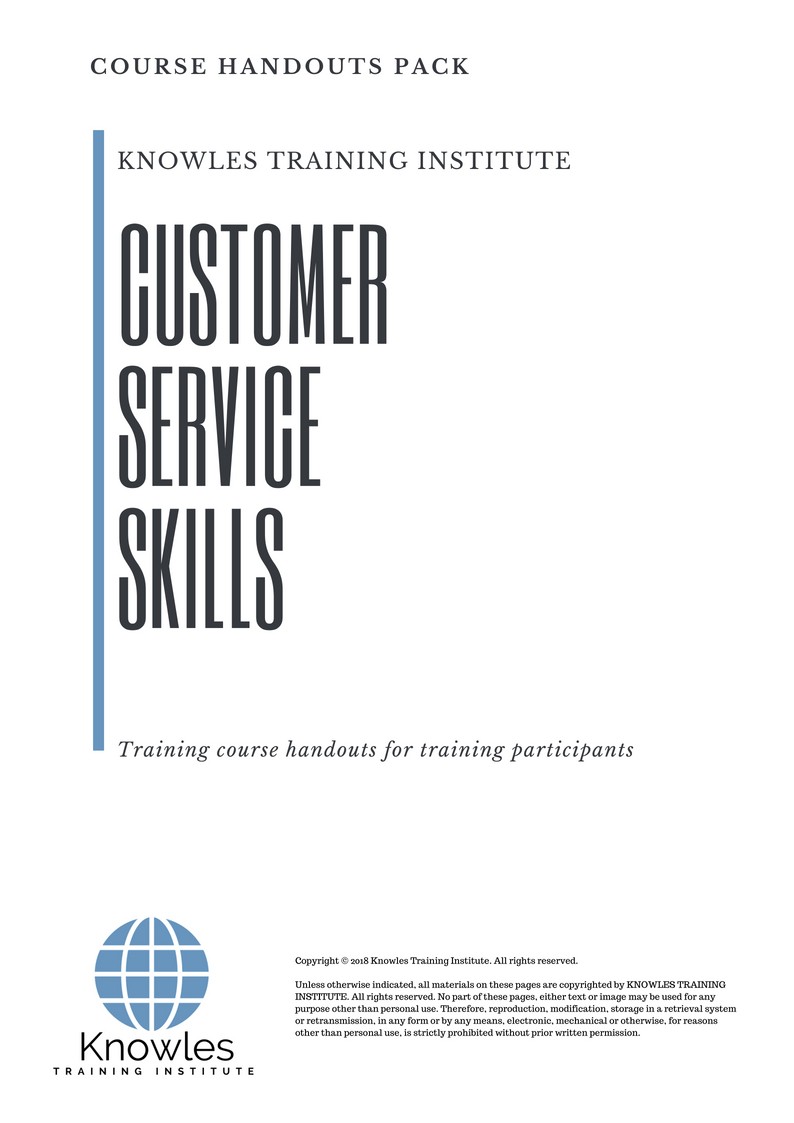
Customer Service Skills Course in Poland PPT Slides Used During Course
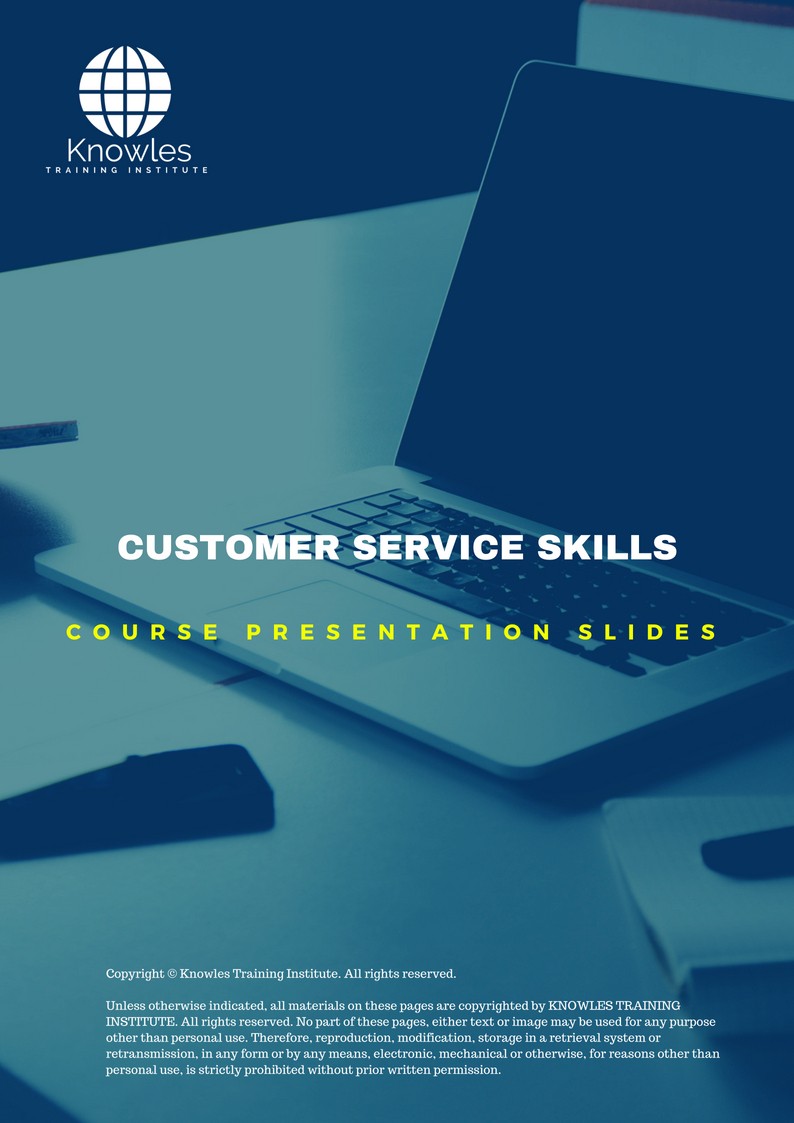
Customer Service Skills Course in Poland Certification
Each course participant will receive a certification of training completion
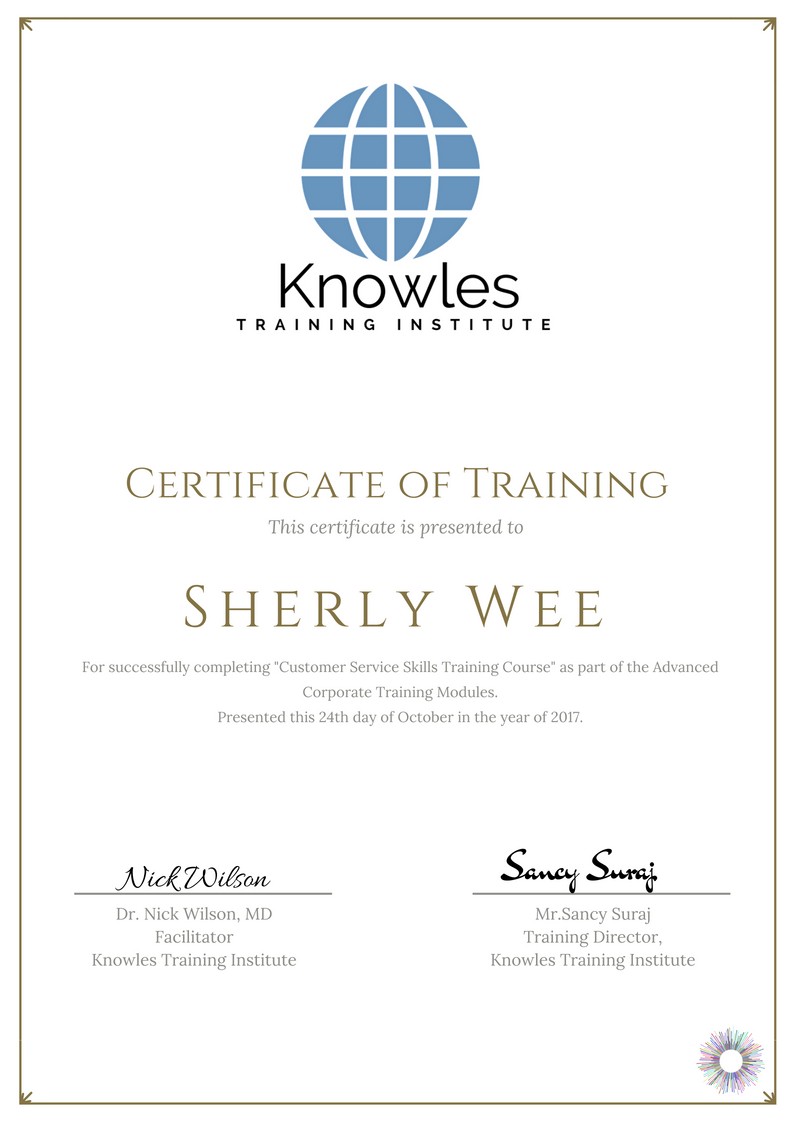
Course Fees for Customer Service Skills Training Course in Poland
There are 4 pricing options available for this Customer Service Skills training course in Poland. Course participants not in Poland may choose to sign up for our online Customer Service Skills training course in Poland.
USD 679.97 For a 60-minute Lunch Talk Session.
USD 259.97 For a Half Day Course Per Participant.
USD 419.97 For a 1 Day Course Per Participant.
USD 569.97 For a 2 Day Course Per Participant.
Discounts available for more than 2 participants.
Upcoming Customer Service Skills Training Course in Poland Schedule
Contact us for the latest Customer Service Skills course in Poland schedules:
Email: contact@knowlesti.pl
Message:
Download Customer Service Skills Course in Poland Brochure
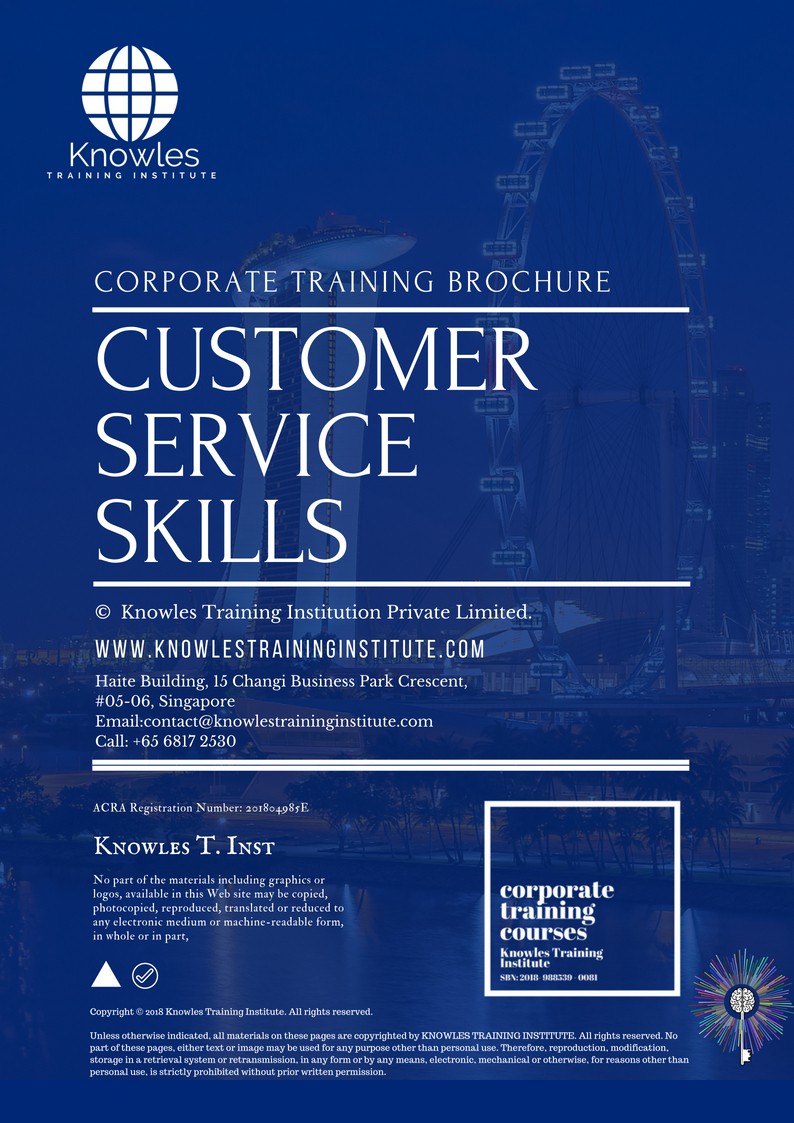
Request for this Customer Service Skills course in Poland brochure. Fill up the short information below and we will send it to you right away!
Post Training Support: A vast majority of training does not have any effect beyond 120 days. To work, training has to have a strong pre- and post-training component. Post-training reinforcement helps individuals to recall the understanding and ask questions.
Blended Learning: Learning does not occur in the classroom. Virtually everybody prefers distinct ways of learning. Successful learning should have a multi-channel, multi-modal strategy.
- We Understand The Industry: We’ve got a profound comprehension of the business, business design, challenges, strategy and the that our participants are in and have designed the courseware to cater to their professional needs.
- Course Content: Knowles Training Institute’s material is relevant, of high quality and provide specific learning results. Participants will leave the training course feeling as they have gained a strong understanding and will also be in a position to execute what they have learned sensibly.
Course Development — The workshop modules follow a systematic and logical arrangement. This structure helps to ensure that the course material allows the facilitators to deliver the course in a logical arrangement. Consider the subjects as building bricks into learning, our facilitators slowly build towards a comprehensive picture of this entire topic.


Course Enquiries

Fill up the form and we will get back to you in less than 1 working day.
Alternatively, give us a call to have one of our training consultants contact you. Our corporate training courses can be contextualized to meet your organization’s training needs. Leverage on our large pool of professional trainers and consultants for your organization’s training needs.
Email: contact@knowlesti.pl
We Guarantee 100% Privacy. We Respect Your Privacy. Your Information Will Never Be Shared.

